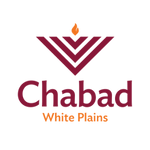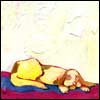You may be confused as to why this article title would even suggest that you might need to sell pets for Passover. What’s wrong with pets? Are they not kosher for Passover?
Well, the issue isn’t so much the pets themselves, but what they eat.
You see, year-round, kosher laws mainly concern (Jewish) humans,1 so you can feed your pet stuff you can’t eat yourself—like meat of a non-kosher animal.
But there are exceptions. We’re not supposed to benefit from cooked mixtures of meat and dairy, so your pet food can’t contain both the meat of kosher mammals and milk derivatives.2
And on Passover, aside from not eating chametz, we can’t benefit from or even own chametz.3 This means that you can’t feed leavened food to your animals on Passover, or even have a non-Jew feed leavened food to your pets, since this benefits you.
So what do you do if you own a pet that must be fed a chametz diet?
One solution is to sell the animal to a non-Jew for the duration of the holiday. This way, whatever chametz the animal is fed by the non-Jew benefits him or her, not you.
Many sale–of-chametz contracts stipulate that such animals are included in the general sale (if you’re not using our contract, check with the rabbi selling your chametz). But the sale itself is not enough—you still have to give the pet to a non-Jew who will care for and feed the animal during the course of the eight-day holiday on his or her property.
Does the Pet Food Actually Contain Chametz?
But before you start making arrangements for your pet, first ascertain whether your pet is actually eating chametz and if there are alternatives (more on that below).
Although Ashkenazim (and some Sephardim) don’t eat kitniyot (legumes and rice) on Passover, there’s no problem with owning it or feeding it to your pet. So it’s perfectly fine if the pet food contains beans, buckwheat, brewer’s rice, corn, grain sorghum (milo), millet, peanuts, peas, rice, safflower, sesame, soybeans, soy flour and sunflower.
You do, however, need to look out for chametz ingredients, including wheat (flour, germ, gluten), barley (cracked, flour) oats (flour, hulled), rye, spelt, pasta, brewer’s dried yeast, xantham gum, and malt. Pet foods with “gravy” often contain chametz, so check the ingredients carefully.
Non-Chametz Alternatives
Your pet may be able to transition to a non-chametz diet for Passover. Look here for some special-for-Passover pet food options for this year, 2025:
To ease the transition, it's recommended to gradually introduce a mix of regular and Passover pet food about one to two weeks before the holiday, gradually increasing the proportion of Passover food. And then do the same thing in reverse for a week or two after Passover.
If your pet is on a prescription diet that contains chametz, there are certain pet food brands with "limited ingredients" that are certified to be nutritionally complete and suitable for your pet's life stage. Consult your veterinarian before making any dietary changes, especially if your pet has allergies or illnesses.
If none of these options work for your pet, then you would have to sell your pet and give it to a non-Jew who will care for it during Passover.
Wishing you a kosher and joyous holiday!







Join the Discussion